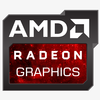AMD has revised its driver update policy, delineating a new approach for its legacy gaming graphics card series preceding the Radeon RX 5000 line. This revision entails a modified schedule for driver updates on graphics processing units (GPUs) based on the Vega and Polaris architectures, which will now receive updates at a reduced frequency.
Meanwhile, the Radeon RX 5000, RX 6000, and RX 7000 series will maintain a consistent cadence of driver releases, generally with one or more updates each month, designed to address crucial software bugs and optimize performance coinciding with new game launches.
In recent months, AMD has been systematically classifying its GPUs into two categories for driver support: RDNA, which includes the RX 5000 series and later models, and pre-RDNA, which consists of the GPU models released before the RX 5000 series. The distribution of driver packages has been bifurcated accordingly: one package exclusively for RDNA GPUs, marked by the inclusion of "rdna" in the file name and approximately 600 MB in size, and a more comprehensive package of 1.1 GB that provides support for both RDNA and pre-RDNA GPU architectures.
AMD has confirmed that pre-RDNA GPUs will be subject to a less frequent update schedule, a common practice for managing support for previous-generation technology as it nears the end of active support. In a statement to AnandTech, AMD says:
The AMD Polaris and Vega graphics architectures are mature, stable and performant and don't benefit as much from regular software tuning. Going forward, AMD is providing critical updates for Polaris- and Vega-based products via a separate driver package, including important security and functionality updates as available. The committed support is greater than for products AMD categorizes as legacy, and gamers can still enjoy their favorite games on Polaris and Vega-based products.
The specific GPU series impacted by this policy shift are the Radeon RX 400 and RX 500 series, known as "Polaris," the RX Vega series, and the Radeon VII. The Radeon RX 5000 series' market presence surpasses four years, which contextualizes the tenure of the RX Vega series at six years, the RX 500 series at seven years, and the RX 400 series at eight years. AMD's strategy focuses on optimizing resource allocation towards the advancement and support of its more recent GPU models while continuing to provide a measure of support for its older, legacy devices.


